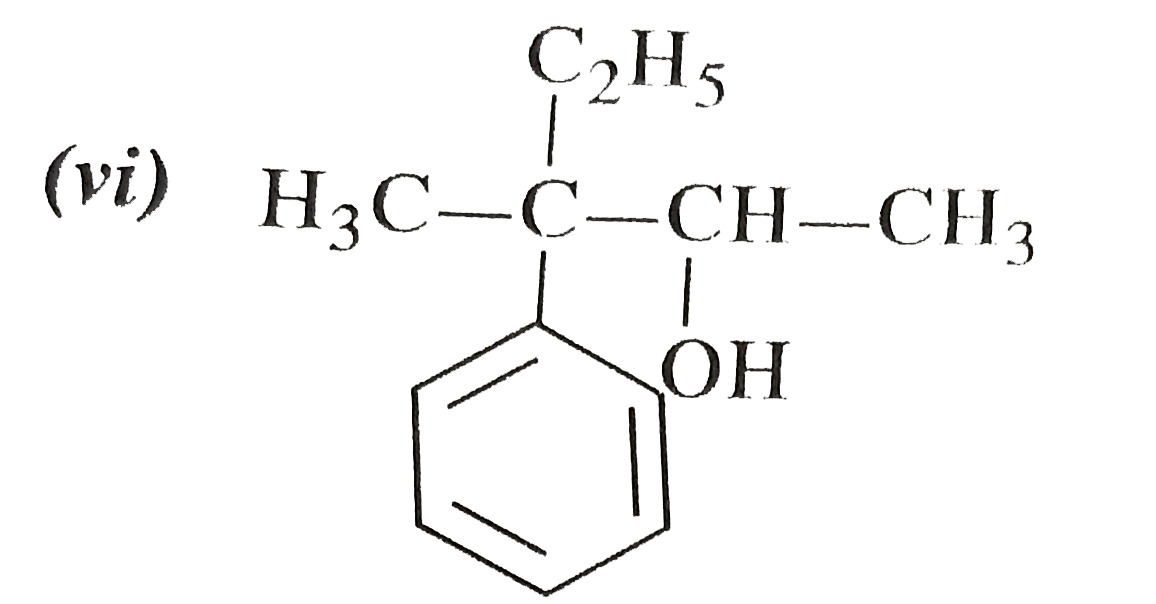Column-IColumn-IIA) CH2=CH−ClP) +I effectB) CH3−CH=CH−O−CH3Q) -I effectC) CH3CH2CH2−ClR) HyperconjugationD) CH3−CH2−CH2−CH3S) ResonanceSolution in Telugu
The correct Answer is:A-QS; B-PQRS; C-Q; D-P
Step by step video, text & image solution for {:("Column-I", "Column-II"), ( "A) "CH_(2)=CH-Cl, "P) +I effect"), ("B) "CH_(3)-CH=CH-O-CH_(3), "Q) -I effect"), ("C) "CH_(3)CH_(2)CH_(2)-Cl, "R) Hyperconjugation"), ("D) "CH_(3)-CH_(2)-CH_(2)-CH_(3), "S) Resonance"):} by Chemistry experts to help you in doubts & scoring excellent marks in Class 11 exams.
Topper's Solved these Questions
- BOOK - AAKASH SERIESCHAPTER - ELECTRONIC EFFECTS AND REACTION INTERMEDIATESEXERCISE - LECTURE SHEET - EXERCISE-I (Integer Type Questions)5videos
ELECTRONIC EFFECTS AND REACTION INTERMEDIATES
- BOOK - AAKASH SERIESCHAPTER - ELECTRONIC EFFECTS AND REACTION INTERMEDIATESEXERCISE - LECTURE SHEET - EXERCISE-II (Straight Objective Type Questions)21videos
ELECTRONIC EFFECTS AND REACTION INTERMEDIATES
- BOOK - AAKASH SERIESCHAPTER - ELECTRONIC EFFECTS AND REACTION INTERMEDIATESEXERCISE - LECTURE SHEET - EXERCISE-I (Linked Comprehension Type Questions)6videos
ELECTRONIC EFFECTS AND REACTION INTERMEDIATES
- BOOK - AAKASH SERIESCHAPTER - ELECTRON MIGRATION EFFECTS EXERCISE - QUESTIONS FOR DESCRIPTIVE ANSWERS10videos
ELECTRON MIGRATION EFFECTS
- BOOK - AAKASH SERIESCHAPTER - ELEMENTS OF BORON FAMILYEXERCISE - OBJECTIVE EXERCISE - 37videos
ELEMENTS OF BORON FAMILY
Similar Questions
Number of possible resonance structures of
 05:48View Solution
05:48View SolutionWhich of the following is not a nucleophile ?
01:46View SolutionIf a compound contains conjugated system, the measured bond lengths differ form the expected bond length but 1, 3 diene contains following resonance structures

The bond length between C2−C3 carbon is02:25View SolutionHyperconjugation effect is also termed as 'no bond resonance'. Why?
View SolutionWhich one of the following compounds is not a protonic acid ?
04:47View SolutionGiven the IUPAC names of the following compounds: (i) CH_(3)CH_(2)CH_(2)underset(C_(2)H_(5))underset(|)overset(CH_(3))underset(|)(C )CH_(2)-overset(CH_(3))overset(|)(C )=CH_(2) (ii) CH_(3)-overset(CH_(3))overset(C )H-C-=CH (iii) C_(6)H_(5)-CH=CH-CH_(2)Cl CH_(3)CH-CH-CH_(2)Cl (iv) CH_(3)CH=CH-CH_(2)Br v CH_(2)=CH-overset(Cl)overset(|)(C )-CH=CH_(2) vi CH_(2)=CH-overset(CH_(2)CH_(3))underset(|)(C )H-underset(Cl)underset(|)(C )=CH_(2) vii. (CH_(3))_(3)C - CH=CH_(2)
View SolutionThe following two isomeric alkenes are related as−
(I) CH3−CH=CH−CH2−CH2−CH3
(II) CH3−CH2−CH=CH−CH2−CH306:34View SolutionGive the IUPAC names of the following :
(i) CH3−CH=CH−CH=CH2
(ii) CH3−CH2−CHO
(iii) CH−O∣∣C−CH2−CH3View SolutionGive the IUPAC names of the following compounds:
(i)C6H5−CH2−CH2−OH (ii)CH3−CH3∣C∣CH3−CH2−CH2−OH
(iii)[(CH3)2CH]3COH. (iv)CH3−CH∣OH−CH2−CH2−O−CH2CH3
(v)CH3−CH2−CH∣Cl−CH∣CH3−CH3∣C∣OH−CH3 (vi)
(vii)(CH3)3COH (viii)CH3−CH∣CH3−CH∣OH−CH2−CH∣CH3−CH3
(ix) CH2OH |CH2−CH2−CH−CH−CH−CH3 | | CH2Cl CH3, (x) CH3−C=C−CH2OH | | CH3Br
(xi) CH2=CH−CH∣OH−CH2−CH3, (xii) CH2OH |CH3−CH−CH2−CH−CH−CH3 | | CH3 OH04:15View SolutionGive the IUPAC names of the following compounds : (i) {:(" "CH_(2)OH),(" |"),(CH_(3)-CH_(2)-CH-CH-CH-CH_(3)),(" |"" |"),(" "CH_(2)Cl" "CH_(3)):} (ii) {:(" "CH_(2)OH),(" |"),(CH_(3)-CH-CH_(2)-CH-CH-CH_(3)),(" |"" |"),(" "CH_(3)" "OH):} (iii) H_(2)C=CH-underset(OH)underset(|)(CH)-CH_(2)-CH_(2)-CH_(3) (iv)
View SolutionPredict all order of reactivity of the following compounds in dehydrohalogenation. a,. I. CH_(3)CH_(2)CH_(2)CH_(2)Cl II. (CH_(3))_(2)CHCH_(2)Cl III. (CH_(3))_(2)CH - CH_(2)Br IV. CH_(3)CH(Br)CH_(2)CH_(3) V. (CH_(3))_(3) C - Br b. I. CH_(3)CH(Br)CH_(3) II. CH_(3)CH_(2)CH_(2)Br III. (CH_(3))_(2) CH - CH_(2) Br IV. (CH_(3))_(3)C - CH_(2) Br
01:40View Solutionनिम्नलिखित यौगिकों के आई.यु.पी.ए.सी.नाम लिखिए |
(i) (CH3)2CH−CH=CH−CH3−CH || CH3−CH−CH ∣ C2H5
(ii)
CH2=C(CH2CH2CH3)2
(iv) CH3CH2CH2 CH2CH2CH3 | | CH3−CHCH=C−CH2−CHCH3 ∣ CH302:27View SolutionCH3 ∣CH3−CH−CH−CH−CH2−CH2 | | CH2−ClCH3
locants at parent carbon chain will be :-02:03View Solutionनिम्नलिखित यौगिकों के IUPAC नाम लिखिए-
(i) CH3 |CH3−CH2−CH−CH−C−CH3 | | | CH3 I CH3
(ii) Cl |CH3−CH2−CH−CH−C−CH3 | | | CH3 OH CH313:05View SolutionCH3−CH2(I)−CH=CH2 CH3−CH(II)=CH2
In additon of HBr in I and II05:43View Solution

